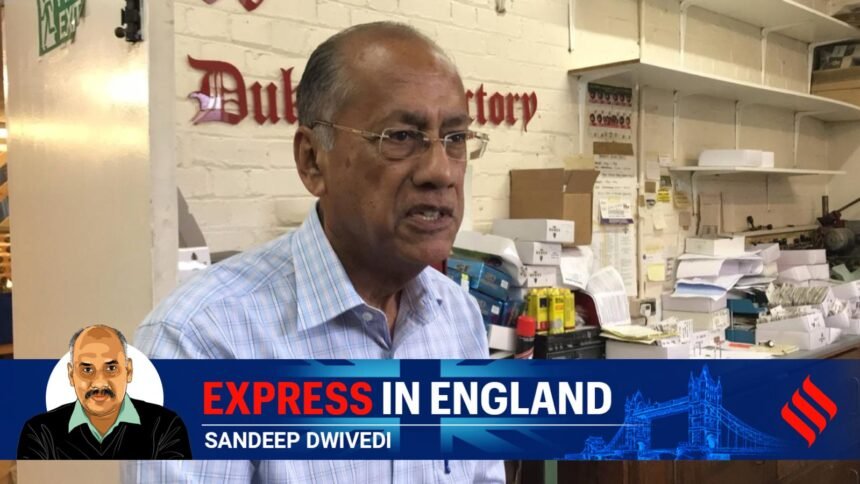The Dukes ball which has been long used in Test matches in England has come under severe criticism like never before. With the conditions in England being unusually dry this summer and flat decks being the favoured one for England, wickets have come at a premium. And more importantly, in the two Tests of the Anderson-Tendulkar Trophy so far, both teams have repeatedly asked umpires for a change of ball and even saying openly that the Dukes ball goes softer very soon. Despite India taking 20 England wickets to win the Edgbaston Test, captain Shubman Gill had this to say about the Dukes ball. “It is very difficult for the bowlers. I think more than the wicket, maybe the ball is out of shape very quickly. It gets soft very quickly. I don’t know what it is, whether it is wickets or whatever. It is difficult for the bowlers. It is very difficult to get a wicket in such conditions, when there is nothing there,” he said. As the Dukes ball faces intense scrutiny, its manufacturer Dilip Jagjodia spoke to the Indian Express.
Excerpts.
Q: The Dukes balls are in the spotlight again?
A: Cricket balls come under criticism all the time. Not just Dukes, it can be SG, Kookaburra. You need to give a brand new ball for a Test, making it a product that can’t be tested. And since it is made out of natural raw materials, you can’t 100 percent guarantee that every ball will be perfect. Nobody on the planet can make something like that. I keep telling everybody, the bats have changed, they’re very powerful, the players are stronger, they’re hitting the ball out of the ground far more often. Take the Indian captain, Shubman Gill, he’s not known to be a six-hitter. He is a very good-looking orthodox batsman, but he was hitting sixes. The ball is clattering into pillars and benches all that and the ball.
 Dukes ball (File photo)
Dukes ball (File photo)
Q: It is being said they become softer early in the Test…
A: A cricket ball is also supposed to go soft over a period of time, that’s why you get a new ball at 80 overs. But you know, we live in an impatient world. So after 30 overs, if they haven’t got whatever they’ve received – the number of wickets – they’re looking to change the ball with the hope that the new ball they get hold of will be harder. But at the end of the day, there have been results in this series. There have been high scores, so the batsmen were not disadvantaged and India took 20 wickets. What else can the ball do? The game also lasted for five days.
Q: Is the criticism of cricket balls fair?
A: Cricket is not a static game. This year the summer has been warmer. I was in Bengaluru 10 days ago, it was cooler there than in London. It was very dry, very warm and they covered the pitches in February. So there’s no actual water on the pitches so there are loads of very nice cricket pitches. If a Test gets over in two-and-a half-days, they say Dukes ball is bowler-friendly. If it’s a dry pitch and they get hundreds of runs and then they still get a result, they don’t give you credit for that. Now, they say, the Dukes ball can’t get wickets.
Q: You have a set template or a fixed process to make Dukes balls?
A: Making a cricket ball is a long process and we work to a standard. We’re making the balls to the original British standard. I’m a very stickler for the rules, I make sure that we do the best we can. I select the balls personally, I present them, and if you look at them, they are the most beautiful things on the planet. When you play with them, that’s out of my control. How many runs have been scored, who hit the ball, these are the variations.
Q: So ball making isn’t a mechanical process ..
A: We are grappling with raw materials which are slightly variable. Human beings are involved in making the product and so, there might be some slight knock-on effect on balls. Just empty your brain, picture that these balls are getting hit all day. It is a miracle they’re not changed after every two hours. We keep everything under review, but I can’t change anything dramatically. If something is wrong, we have to identify it and get it right the next time. It is not possible to make any product with natural materials like an engineered product like steel. They would have a certain thickness of steel, cut into a machine. Like you can make two cars with the exact specification. Cricket balls are not engineered products, this is a craft product.
Story continues below this ad
Q: How tough is it to get the balance right when it comes to soft or hard cricket balls?
A: If I made a really hard ball, it would have broken bats. That’s the problem, we have to be careful. If people are adventurous players, they might be tempted to do it. That would be disastrous. The laws of the game are that the ball has to deteriorate over 80 overs. So the ball has to play 80 overs, it gradually gets worse. You can’t suddenly come after 20 overs and say, this ball is not doing what I want or what it does. If there is something genuinely wrong, then it has the option to change it.








